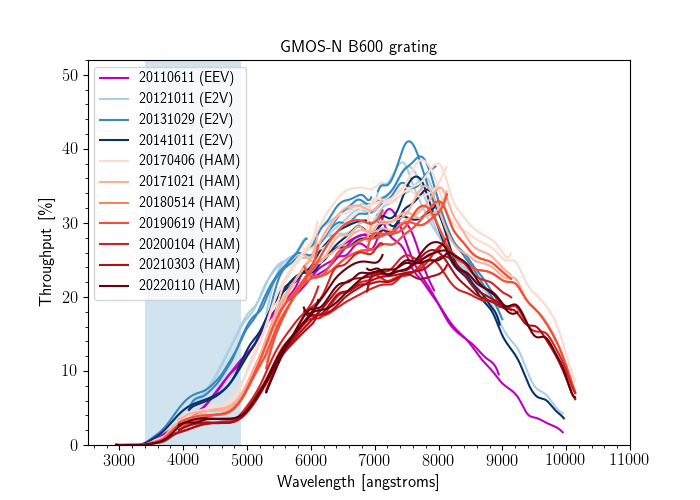It has recently been noticed that the sensitivity of GMOS-N B600 observations at wavelengths blueward of 500 nm is significantly lower than predicted by the Exposure Time Calculator. Historic data of spectrophotometric standard stars show that this reduction in sensitivity is largely attributed to a decrease of the B600 grating response, which started to develop around 2013 to 2014.

The above plot shows the evolution of the throughput including telescope mirrors, GMOS-N optics, the B600 grating, and the detector response since June 2011. The primary wavelength region affected by the blue sensitivity loss of the B600 grating is marked by the blue shaded area. Other significant changes in the shapes of throughput curves are associated with the detector upgrades from EEV (magenta) to E2V (blue) to Hamamatsu (HAM, red) chips. The overall loss in throughput since 2017 is attributed to the degradation of the telescope primary mirror, which is currently planned to be addressed during the October telescope shutdown.
GMOS-N and GMOS-S are in the process of commissioning new B480 gratings which will partially replace the B600 (as well as R400) capabilities. Whether there is a need for replacing the GMOS-N B600 grating will be assessed once the new B480 grating is in operation.
For any questions about GMOS-N B600 programs that rely on the <500 nm sensitivity, please contact the program support scientists or GMOS_N_science@gemini.edu.